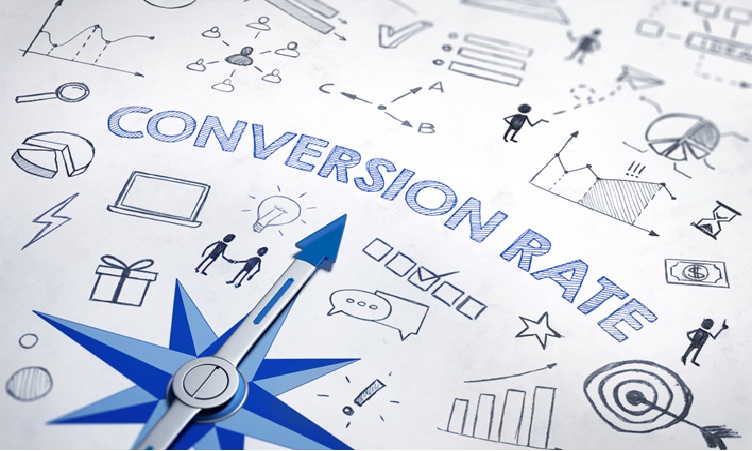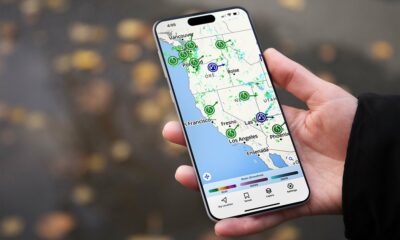MARKETING
Top 7 Metrics You Need To Track Today!

Creating an extensive list of potential leads is fantastic, but if those leads aren’t converting into paying customers, you’ll have a lot of trouble in the long term.
That is where lead conversion comes into the picture. Lead conversion means converting a lead into a customer, meaning that the lead has been successfully persuaded by your marketing campaign and will make a purchase from your company.
It can be difficult for marketers to generate leads, so it is essential to have them and know how to convert them.
A recent marketing study conducted by researchers found that only 12% of marketers surveyed feel confident and satisfied with their lead conversion knowledge and capabilities.
Knowing that such a low number of professional marketers feel satisfied with their capabilities is a very alarming thing to witness.
So what needs to change for things to get better? Hence we have compiled a list of all the fundamental metrics of the lead conversion process so that marketers can understand how to track and improve their lead conversion strategies.
What is Lead Conversion?
Lead conversion is the process of turning a lead into a customer. It is an essential part of any sales and marketing strategy. To achieve lead conversion, you need to understand the needs and wants of your potential customers and how to match those needs with your products or services.
It is not easy to convert leads, and it takes time, effort, and strategy. Many things need to be done to convert leads, but many things can go wrong. Lead conversion is not a one-size-fits-all process. The best way to convert leads depends on the type of industry, how many leads you have, and their stage in the sales funnel.
Why Is Lead Conversion Important?
Lead conversion is essential for several reasons. For one, it is the most critical part of the sales process. This is because, without conversion, there is no sale. Lead conversion also helps to improve marketing and sales efficiency by ensuring that qualified leads are converted into customers.
Lead conversion is the process of turning a lead into a customer. It can be done by converting the lead to a sale, or it could be done by converting the lead to an opportunity.
Many people think that they can generate leads, and then they don’t need to worry about sales or marketing. But if you’re not turning those leads into customers, then you’re wasting your time and money on generating those leads in the first place.
What Are Lead Conversion Metrics?
Lead conversion metrics allow you to objectively measure your marketing and sales teams’ success in generating leads converting them to customers and efficiently.
Your marketing team may be doing some great things, but are they as efficient as they could be? To find out, you need to measure your lead conversion metrics. Measure how many new leads your marketing brings in, how many of those are converting into customers, and how long it takes for each customer to become a paying customer.
Lead conversion metrics are essential aspects of the process of lead conversion as they tell a powerful story. While the discussion of lead generation and conversion strategies are crucial, what we need to focus on are the metrics that will enable you to determine whether a given lead conversion tactic is successful or not.
Fundamental Lead Conversion Metrics: Top 7 You Need To Track
The goal of lead conversion metrics is to enable you to understand better how well your campaigns are performing and to measure their growth and success objectively. The only way your campaigns are going to perform well, is if you manage your time and resources accurately. Remember that lead conversion is a constantly evolving endeavor, so do not take any metrics at face value and always compare them to your relevant industry standards for better performance assessment.
#1 Cost Per Conversion
Cost Per Conversion is the total cost of generating a lead and converting that lead into a sale or other desired outcome. Cost Per Conversion is the total cost of generating a lead and converting that lead into a sale or a different desired outcome. It can be calculated by taking the entire marketing spend and dividing it by the number of conversions.
Cost per lead converted is a measurement that can be used to evaluate the effectiveness of different marketing strategies and tactics. It helps determine what marketing campaigns are worth their cost and which ones are not. Tracking this metric allows you to quickly gauge the effectiveness of your conversion campaigns, and understand if it is good enough.
#2 Lead Value
Lead conversion is the process of turning a lead into a customer. Any business needs to know how to convert leads into customers as it is the only way to grow their business.
Lead value is a metric that can be used to determine the potential of a lead. Leads are usually evaluated by their conversion rate, the percentage of leads that convert into customers.
Leads can also be evaluated by their potential to convert into customers. This metric is called lead value, and it takes into account factors such as the cost of generating the lead, how much time it takes a salesperson to close a sale and what they earn in commission for doing so.
#3 Conversion ROI
Conversion ROI is the ratio of leads generated to the cost of generating those leads. Lead conversion is the number of people who eventually convert into customers. Conversion ROI is calculated by dividing the total revenue generated by the total cost spent on generating those leads. It’s a way to measure how much profit was earned with each generated lead.
Conversion ROI is a metric that tells you how much money you are earning from every dollar you spend on marketing and advertising. A good conversion ROI will show that your marketing efforts are worth it and that you are getting as much value from your investments as possible.
#4 Lead Conversion Rate
Lead conversion rate is the percentage of people who have expressed interest in a product or service and then purchase it. Lead conversion rates are an essential metric that helps them understand how well their marketing is working.
For example, if a company has 100 leads and 10 of those leads convert into sales, the lead conversion rate would be 10%. A lead conversion rate can be calculated by dividing the number of conversions by the total number of leads.
#5 Lead-to-Sale Conversion Rate
The lead-to-sale conversion rate takes things a step further by determining how successfully you convert a lead into a paying customer. This rate is significant to marketers and salespeople since it indicates how many leads turn into sales and generate revenue.
This statistic is calculated by dividing the number of converted leads (those who buy) by the total number of leads. In the previous example, your lead-to-sale conversion rate is 25% if 5 of the 20 leads to purchase.
#6 Lead-to-Opportunity Conversion Rate
Lead-to-Opportunity Conversion Rate is the percentage of leads that convert into opportunities. It is one of the most important indicators of your marketing success. To increase the lead-to-opportunity conversion rate, it is essential to get more qualified leads.
You need to identify your target audience’s pain points and needs and then create marketing campaigns that address those needs. Leads and opportunities are two critical metrics in B2B marketing. They measure how effective a company’s marketing efforts are in generating and converting leads into customers. The higher the lead-to-opportunity conversion rate, the better for a company’s bottom line.
#7 Time to Conversion
Time to conversion is a metric you may use to determine how long it takes for a visitor to your website to convert into a lead. You divide the entire amount of time spent on your website by the total number of leads. It’s a terrific approach to see if there are any entrance points on your website that might be improved for lead generation. Again, a longer duration could indicate that your visitors are taking their time to consume your material, which isn’t necessarily bad.
Wrapping Up: The Importance of Lead Conversion Metrics
Lead conversion metrics are essential because they help marketers and sales executives make better decisions about their marketing campaigns. The data can help them understand what is working and what is not working, making changes to their campaigns accordingly. Accurate measurement of lead conversion rates can help optimize marketing campaigns by focusing on what is working and what isn’t.













You must be logged in to post a comment Login